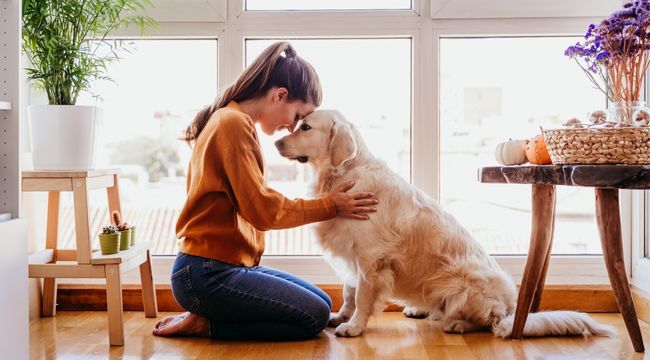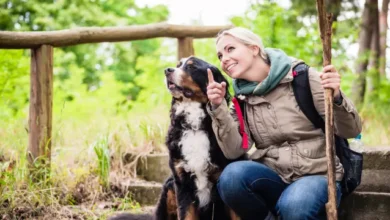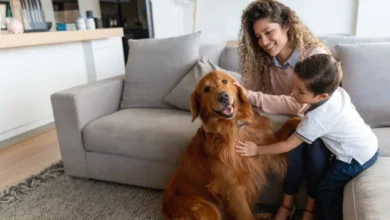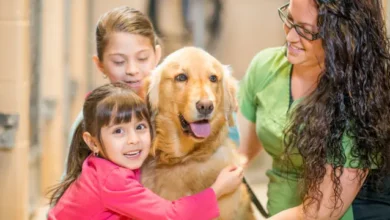
Getting a dog is a lot like getting a bundle of happiness. Pets aren’t just pets; they become family members who bring love and company all the time. There are some things you need to do on this wonderful trip, though. There are some important things to think about before you bring an animal friend home. Every dog needs to live in a safe and loving place with good food, regular vet visits, and a warm place to sleep. That being said, it’s not just about their health. Both daily exercise and mental stimulation are very important. Imagine taking them for a walk once (or twice, if possible) a day and giving them a safe yard where they can run and play as much as they want. These aren’t just standards; they’re steps toward making sure your new dog or cat has a happy and healthy life.
Can You Bear the Dog Adoption Costs?
Let’s chat about something crucial yet often overlooked: the cost of dog adoption. It’s not just the initial adoption fee we’re talking about, which, by the way, can vary widely depending on where you’re adopting from. But hey, adopting a dog means you’re signing up for a commitment that goes beyond just bringing them home.
First off, there’s the setup cost. Think about it – your new buddy will need a bed, a leash, a collar, food and water bowls, and that’s just the start. Then, there’s the ongoing care: nutritious food, routine vet check-ups, vaccinations, maybe even pet insurance, and let’s not forget the toys and treats (because who doesn’t want to spoil their dog a little?).
Emergency medical care is another factor. Pets, much like humans, can have unexpected health issues, and it’s always better to be financially prepared for that. Plus, depending on your lifestyle, you might also need to consider costs for dog walking services or daycare.
So, can you bear the costs of dog adoption? It’s a question that deserves some serious thought. Budgeting for a dog is more than just an initial expense; it’s about ensuring you can provide for their health and happiness throughout their life. It’s definitely worth every penny, but it’s good to be prepared.
Where to Find Your Future Furry Friend: Top Resources for Dog Adoption
If you’re looking to adopt a dog, there are several reputable resources and organizations that can help you find your new furry family member. Here’s a list of some places to start your search:
- Local Animal Shelters and Rescue Groups: Check with your local animal shelter or search for local dog rescue organizations. These are great places to find dogs of all breeds, ages, and sizes in need of homes.
- The American Society for the Prevention of Cruelty to Animals (ASPCA): The ASPCA operates a nationwide network of animals in need, including dogs up for adoption. Their website offers a searchable database for adoptable pets at ASPCA Adoption Center.
- Petfinder: Petfinder is an online, searchable database of animals that need homes. It’s a great tool for finding adoptable dogs in your area. Visit Petfinder to start your search.
- Adopt-a-Pet.com: Another excellent online resource where you can search for adoptable pets from various shelters and rescue groups. Check out their website at Adopt-a-Pet.com.
- Breed-Specific Rescue Groups: If you have a specific breed in mind, breed-specific rescue groups can be an excellent resource for finding your new companion. These organizations often rescue and rehome dogs of a specific breed.
- The Humane Society of the United States (HSUS): HSUS offers resources and tips for adopting a pet and can help guide you to local shelters. Their website is The Humane Society of the United States.
Before adopting, remember to research and consider the commitment involved in caring for a dog. Adoption counselors at these organizations can help match you with a dog that fits your lifestyle and preferences, ensuring a happy home for both you and your new pet.
The Legal Responsibilities Of A Dog Owner
Let’s dive into something super important yet not always front of mind when dreaming about puppy cuddles: the legal responsibilities of being a dog owner in the United States. It’s like the rule book for ensuring your furry friend not only stays happy and healthy but also keeps you on the right side of the law.
- License Your Dog: Picture this as your dog’s official ID. Just like you renew your car’s registration, you’ve got to renew your dog’s license annually. It’s a way for the community to keep track of the furry residents and ensure they’re vaccinated against rabies.
- Up-to-Date Rabies Vaccination: Speaking of rabies, keeping proof of your dog’s rabies vaccination is non-negotiable. This isn’t just for the safety of your dog but for the community at large. Rabies is serious business, and this law helps keep it in check.
- Numbered Tag: This one’s like your dog’s personal name tag, but with legal weight. Once you’ve got your dog licensed, they’ll get a numbered tag to wear around their neck. It’s their way of saying, “I belong to someone who cares about me and follows the rules.”
- Leash Law: Ever heard the saying, “Keep your friends close and your dogs closer”? Well, maybe that’s not exactly how it goes, but keeping your dog on a leash in public is a law. It’s all about ensuring your dog’s safety and respecting others’ space.
- Proper Care: This might seem like a no-brainer, but the law specifies that you need to take good care of your dog. That means providing adequate food, water, shelter, and medical care. Basically, it’s ensuring your dog lives a good life.
- Protection from Harm: Lastly, it’s your responsibility to protect your dog from pain, suffering, injury, and disease. This goes hand in hand with proper care but emphasizes the need to prevent harm and suffering to your pet.
Being a dog owner is incredibly rewarding, but it comes with a set of legal responsibilities that are designed not just to protect your dog, but also the community. It’s all about love, care, and a bit of paperwork!
Choosing the Perfect Puppy
Choosing the perfect puppy is an adventure filled with excitement and, let’s be honest, a bit of uncertainty. It’s a bit like going on a treasure hunt without a map. Every puppy, much like people, comes with its own unique personality, quirks, and charm. So, how do you find the one that’s meant to be part of your family?
First off, consider meeting the puppy’s parents if you can. It’s not just about seeing where your puppy gets its stunning looks from; it’s about getting a sneak peek into the future. The apple doesn’t fall far from the tree, as they say, and this holds true for puppies too. By observing the parents, you can gauge what kind of temperament to expect, and get a pretty good idea of how big your puppy will grow. This is especially crucial if you’re living in a space that’s better suited for a smaller breed.
Now, if you’re leaning towards a mixed breed — which, by the way, can be just as lovable and amazing — brace yourself for a bit of a surprise package. Mixed breeds can inherit any combination of traits from their parents, making it a little more challenging to predict exactly what you’re going to end up with in terms of size, temperament, and even health predispositions. But that’s part of the fun, right? Embracing the unknown can lead to an incredibly rewarding companionship.
Ultimately, picking the perfect puppy is about connection. It’s that magical moment when you lock eyes and just know that you’re meant to be together. So, while it’s important to do your homework and consider all the practical aspects, don’t underestimate the power of your heart in making the final call. Happy puppy hunting!
Picking the Perfect Adult Dog
Choosing the perfect dog is a bit like finding the right piece to complete your family puzzle. It’s a journey filled with questions, considerations, and sometimes, a sprinkle of magic. Let’s unpack some of these important issues to keep in mind when picking a dog, shall we?
- Age of the Dog: Ah, the age-old question—to puppy or not to puppy? Young dogs, bursting with energy and curiosity, require a significant amount of training and supervision. Opting for a younger dog might mean you’re signing up for the joys of puppyhood, complete with all the training challenges it brings. If you’re up for the adventure of guiding a young soul through the basics of life, then a puppy could be a delightful addition to your home.
- Gentleness of the Dog: When considering a new canine companion, temperament is key. A gentle dog is not just a pleasure to be around but is also usually more receptive to training. After all, a cooperative student makes for smoother learning sessions. It’s all about finding a dog whose temperament aligns with your patience and training style.
- Choosing Good Breeders: If you’re leaning towards a purebred, the importance of finding a reputable breeder cannot be overstated. Good breeders not only ensure their dogs are healthy and well-socialized, but they also breed for temperament, which can mean your future pet comes with a genetic predisposition for being polite and trainable. It’s about stacking the deck in favor of a harmonious pet-parent relationship.
- Magical Mix or Purebred: Whether to go for the predictability of a purebred or the surprise package of a mixed breed is a decision that deserves careful thought. Both have their charms and challenges. Shelters and rescues are filled with both types, each looking for a loving home. Speaking with a dog adoption counselor can help you uncover which furry friend might best suit your lifestyle and expectations. It’s like matchmaking, but for lifelong companionship.
- Consider Your Lifestyle: Your living situation and lifestyle are huge factors in deciding which dog to bring into your life. Reside in a cozy apartment on the fourth floor without much space for a large, energetic dog? A smaller, more laid-back pup might be your ideal match. Conversely, if you’ve got space to spare and a lifestyle that includes plenty of outdoor activities, a larger dog could be the perfect jogging buddy and playmate for your kids.
Remember, choosing a dog is a significant decision that shapes the next several years of your life. It’s about finding a companion that complements your lifestyle, meets your expectations for companionship, and ultimately, fits into your family like they’ve always belonged.
Sexual Needs of Your Dog
Ah, the birds, the bees, and…the dogs? Yes, we’re venturing into the territory of your furry friend’s, shall we say, personal needs. And let me tell you, it’s not just a walk in the park. It’s more like a sprint through a hormonal hurricane if you’re not prepared.
First off, let’s talk about the lads, the unneutered young male dogs. Imagine being a teenager with all those hormones surging through you, except you’re covered in fur and can’t exactly sign up for Tinder. These guys can get a little, well, enthusiastic about expressing their newfound feelings. They’re not trying to be problematic; they’re just being, uh, dogs. From marking their territory indoors (yes, including that brand-new rug you just bought) to serenading the neighborhood with lovesick howls, they can turn your home into a lively, albeit challenging, space.
Now, on to the ladies. Female dogs go into heat roughly twice a year, and it’s like rolling out the red carpet for every male dog within a five-mile radius. Suddenly, your backyard feels like the hottest nightclub in town, with suitors lining up at the door. Your girl might become a bit of an escape artist, too, trying to go meet her admirers despite your best efforts to keep her safe and sound.
So, what’s a responsible pet owner to do amidst this furry soap opera? The answer often lies in spaying and neutering. It’s like hitting the snooze button on the hormonal alarm clock, reducing the drive for these escapades and making your pet’s life (and by extension, yours) a bit more peaceful. Plus, it’s a responsible choice for population control, because the last thing the world needs is more unplanned puppy litters turning your living room into a live-action version of “101 Dalmatians.”
In all seriousness, addressing the sexual needs of your dog through spaying or neutering is a vital aspect of pet ownership. It keeps them healthier, reduces the risk of certain diseases, and can make your life a whole lot easier. And who knows, with fewer romantic escapades to manage, you might just have more time for those peaceful walks in the park.
A Lovely Dog House
Creating a cozy and inviting space for your new furry friend is like rolling out the welcome mat to your family. Before you bring your new dog home, setting up a beautiful dog house can make all the difference in helping them feel safe, secure, and, most importantly, loved. Let’s chat about crafting the perfect doggy abode, shall we?
First things first, size matters. Not all dog houses are created equal, and choosing one that matches your dog’s size is crucial. You wouldn’t want your Great Dane squeezing into a chihuahua-sized pad, right? Nor would you want your tiny terrier lost in a mansion. The goal is to find a dog house where your pup can comfortably stand, turn around, and stretch out without feeling cramped.
Now, let’s talk amenities. A window is more than just a way to let in light; it’s a portal to the world for your dog. It keeps the interior well-ventilated and provides your pup with a view to keep an eye on their surroundings (you know, in case that squirrel dares to come back). But the piece de resistance of any dog house? The spacious front deck. It’s not just a design feature; it’s a lifestyle. This is where your dog can lounge in the sun, enjoy a gentle breeze, and maybe take a leisurely nap. Think of it as their personal patio, where they can relax and watch the world go by.
Ensuring your dog has a lovely house is about more than just aesthetics; it’s about creating a safe haven where they can feel truly at home. Whether they’re taking shelter from the rain or soaking up the sun, their dog house is their personal retreat. So, when choosing the right dog house, consider it an investment in your dog’s happiness and well-being. After all, a happy dog makes for a happy home.
Tips for Your Newly Adopted Dog
Congratulations on embarking on the journey of adopting a dog! It’s a heartwarming decision that brings a lot of joy, love, and, yes, a bit of responsibility. Here are some tips to make the transition smoother for both you and your newly adopted furry friend, complete with helpful subheadings to guide you through.
Establish Leadership and Order
Dogs are creatures of habit who respect leadership and thrive on clear boundaries. From day one, let your dog know that you’re in charge by setting rules and routines. This isn’t about being overly strict but rather guiding them with confidence and consistency. It helps create a sense of security and belonging for your dog, knowing they have a leader to look up to.
Setting Up Their Space
A Quality Dog House: If your dog will be spending any amount of time outdoors, ensure they have a sturdy and comfortable dog house. It should be the right size for them to stand, turn around, and lie down comfortably, providing shelter from the elements.
Create a Cozy Indoor Corner: Inside the house, designate a specific area or room as their space. Equip it with a soft bed or crate with bedding, so they know they have a safe, cozy spot to retreat to whenever they need it.
Essential Supply Shopping List
Equip yourself with some dog care essentials to make your new companion feel at home:
- Food and Water Bowls: Choose durable and easy-to-clean options.
- ID Tags and Collar: Safety first! Ensure your dog wears an ID tag with your contact information.
- A 6-Foot Leash: Ideal for walks, offering control yet enough freedom.
- A Crate and Bedding: For a secure, comfortable sleeping area.
- Dog Toys: To keep them entertained and mentally stimulated.
- Grooming Tools: Depending on your dog’s breed, this may include brushes, nail clippers, and shampoo.
First Steps at Home
The Welcome Walk: Before settling in, take your dog for a walk to help them relax and burn off some energy. It’s a great way to introduce them to their new neighborhood in a controlled manner.
Introduce Their New Home Gradually: Start by allowing them to explore a limited area, gradually increasing their freedom as they become more comfortable and understand the house rules.
Health Check and Safety
Schedule a vet visit: It’s crucial to ensure your dog is healthy, vaccinated, and not carrying any diseases. This visit can also be an opportunity to discuss spaying or neutering, diet, and any breed-specific health concerns.
Puppy-Proof Your Home: Keep all toxic materials, such as certain plants, foods, and cleaning products, out of reach. Ensure that small objects they might choke on are not within their paw’s reach.
By following these guidelines, you’re not just welcoming a dog into your house but truly making them part of your family. Here’s to the beginning of a wonderful and fulfilling friendship with your new four-legged companion!
Dog Adoption Costs
Adopting a dog is an incredibly rewarding experience that brings a lot of joy and companionship into your life. However, it’s important to understand the financial commitment involved in adopting and caring for a new furry friend. Here’s a comprehensive look at the costs associated with dog adoption, from the initial adoption fee to ongoing care expenses.
Here’s a detailed table breaking down the potential costs involved in adopting and caring for a dog:
| Expense Category | Cost Range |
|---|---|
| Initial Adoption Fee | $50 – $500 |
| Dog Bed | $20 – $100 |
| Food and Water Bowls | $10 – $50 |
| Collar and Leash | $20 – $50 |
| Crate | $30 – $200 |
| Toys and Treats | $20 – $100 |
| Grooming Supplies | $30 – $100 |
| Monthly Food | $20 – $60/month |
| Annual Veterinary Care | $200 – $400/year |
| Pet Insurance (monthly) | $20 – $50/month |
| Training (per session) | $50 – $200 |
| Grooming (per visit) | $30 – $90 |
| Emergency Veterinary Care | Variable |
Initial Adoption Fees
Adoption fees can vary widely depending on the organization (shelter, rescue, or breed-specific group) and the dog’s age, breed, and health status. On average, you can expect to pay anywhere from $50 to $500. This fee often covers:
- Spaying or neutering
- First vaccinations
- Microchipping
- Initial vet visit
Preparing Your Home
Before bringing your new dog home, you’ll need to purchase some essentials:
- Dog bed: $20-$100
- Food and water bowls: $10-$50
- Collar and leash: $20-$50
- Crate: $30-$200
- Toys and treats: $20-$100
- Grooming supplies: $30-$100
Ongoing Care Costs
Food: Depending on the size and dietary needs of your dog, you can expect to spend $20-$60 per month on dog food.
Routine Veterinary Care: Annual check-ups, which may include vaccines, dental care, and parasite control, can cost $200-$400.
Pet Insurance: While optional, pet insurance can help cover unexpected medical expenses. Premiums can range from $20 to $50 per month.
Training: Professional training classes can range from $50 to $200 per session, though prices vary widely.
Grooming: For dogs that require regular grooming, costs can range from $30 to $90 per visit, depending on the dog’s size and coat type.
Miscellaneous: Don’t forget to factor in occasional costs like boarding or dog walking services, which can vary widely depending on your location and the level of service.
Emergency and Unexpected Costs
It’s also important to set aside money for unexpected expenses, such as emergency veterinary care, which can easily run into the thousands depending on the situation.
Long-Term Considerations
Over the lifetime of your dog, which can be 10-15 years or more, you’ll need to be prepared for the long-term financial commitment. This includes not only the ongoing costs mentioned above but also increases in veterinary care as your dog ages.
Summary
While the cost of adopting and caring for a dog can add up, the companionship and joy a dog brings to your life are priceless. By understanding and preparing for these costs upfront, you can ensure a happy, healthy, and stress-free life for your new four-legged family member.
Conclusion
In conclusion, navigating the dog adoption process requires understanding and meeting specific requirements to ensure a happy and healthy transition for both you and your new furry companion. From assessing your lifestyle to ensure you can provide the necessary care, time, and environment, to understanding the legal responsibilities that come with pet ownership, preparation is key. Remember, adopting a dog is not just about choosing a pet; it’s about welcoming a new member into your family. By ensuring you’re well-versed in the dog adoption requirements, you’re taking the first step towards a rewarding journey filled with love, companionship, and countless memories. Whether it’s choosing the right age and temperament to match your lifestyle or making your home a safe haven for your new friend, every step taken is a step towards a beautiful bond. So, as you embark on this fulfilling journey, let these insights guide you to be the best pet parent you can be, ready to meet the needs and enrich the life of your adopted dog.



